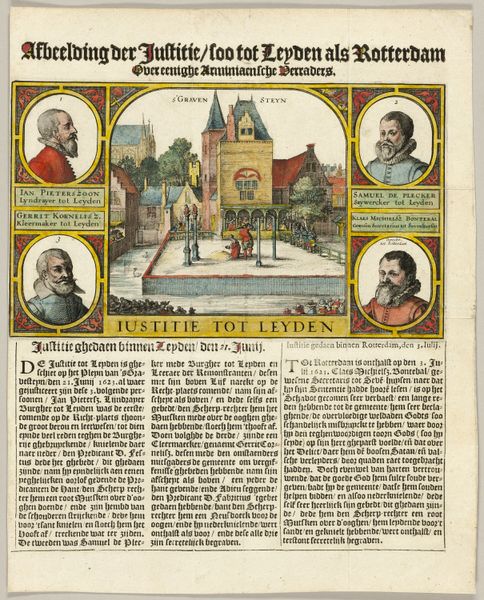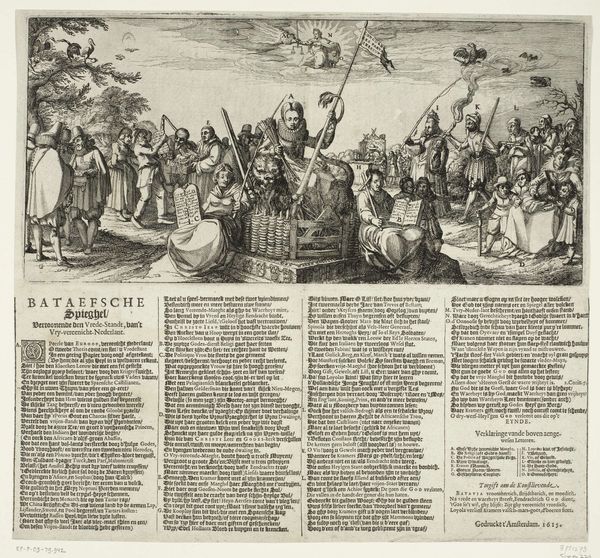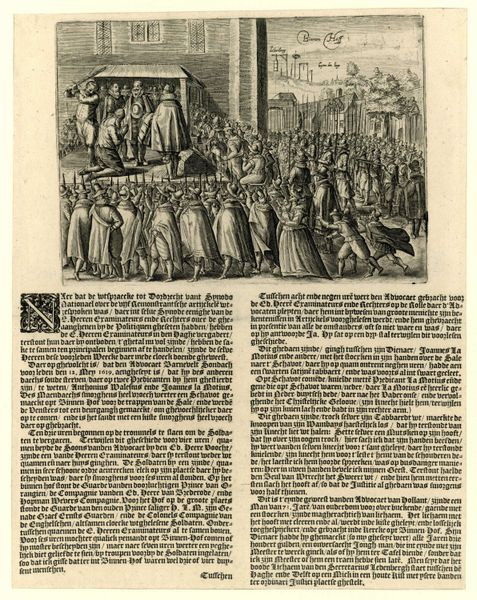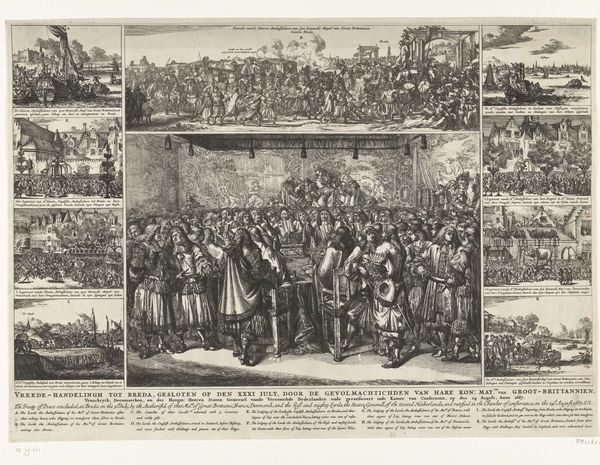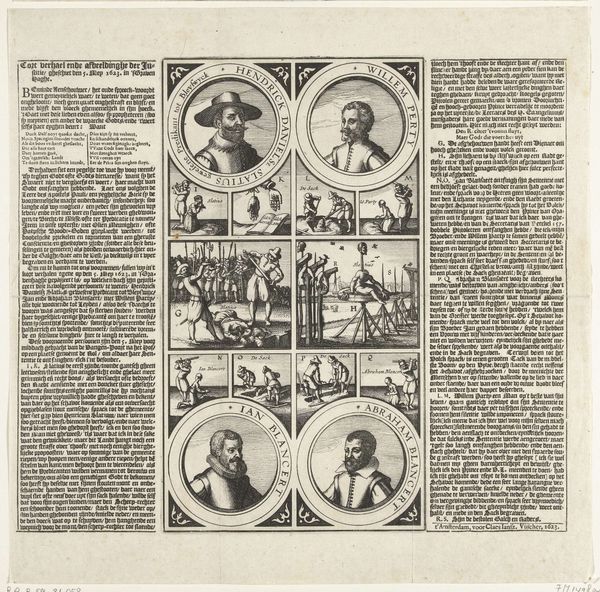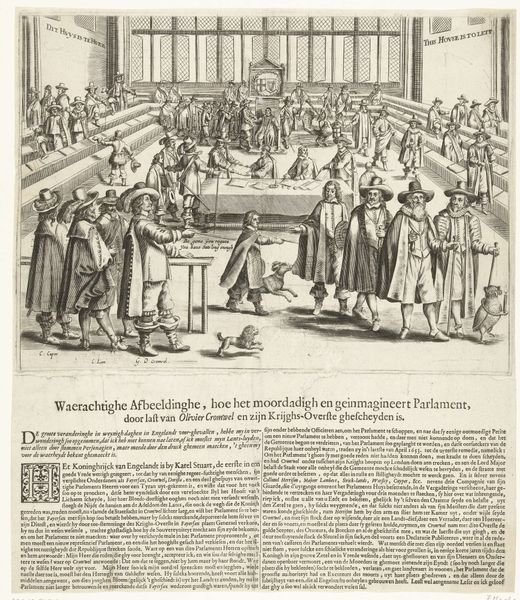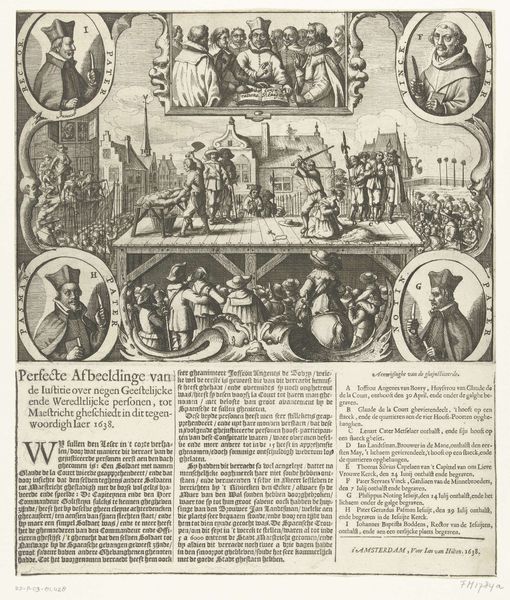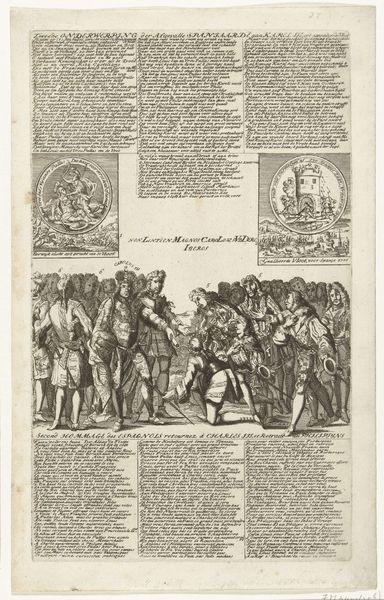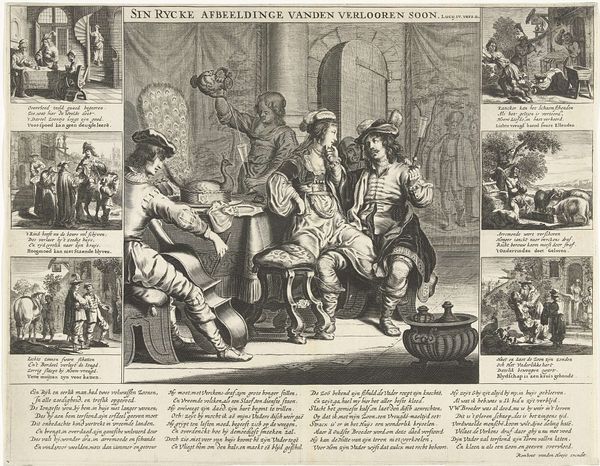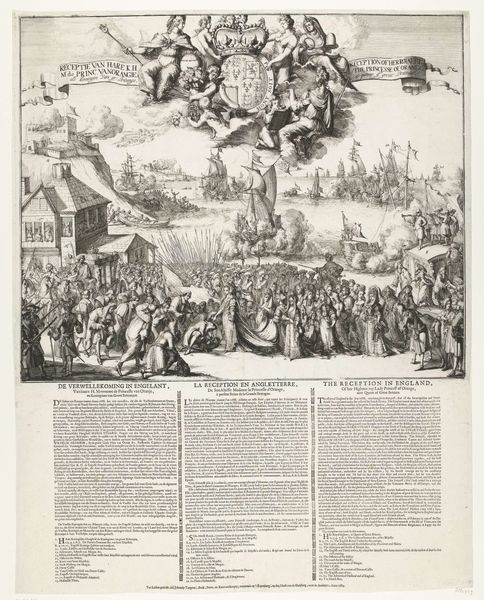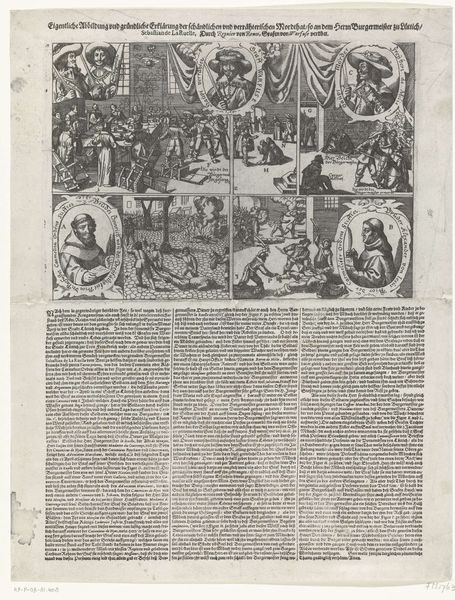
Moord op de dienstmaagd van de domheer Gijsbertus Renner, te Utrecht 1661 1661
0:00
0:00
print, engraving
#
portrait
#
narrative-art
#
baroque
# print
#
group-portraits
#
history-painting
#
engraving
Dimensions: height 389 mm, width 296 mm
Copyright: Rijks Museum: Open Domain
Editor: This print, “Moord op de dienstmaagd van de domheer Gijsbertus Renner, te Utrecht 1661” made in 1661 by Crispijn van de Passe the second, is striking. It depicts portraits, narrative scenes and a dense text block, all rendered in engraving. What I immediately notice is its multi-layered approach to illustrating a tragic event. How does understanding the historical context shape our interpretation of this artwork? Curator: Well, considering the socio-political landscape of 17th-century Netherlands is crucial. Prints like this served a public function beyond mere artistry. They were a form of early news media, circulating stories and shaping public opinion about crime and punishment. The depiction of the execution, for example, speaks volumes about the social order and the public performance of justice. What message do you think the artist, or rather, the commissioner, was trying to send to the public? Editor: Perhaps a warning? Or an appeal to uphold religious and social norms considering a clergyman was affected? The focus on public execution as social theatre definitely highlights the power structures. Were these types of prints common ways to comment on or even influence public discourse at the time? Curator: Absolutely. Think of them as visual pamphlets. They could be commissioned by the victims’ families, local authorities, or even by the publishers themselves. Each aimed to sway the public’s perception of the events and influence the ensuing debate. The details chosen for illustration – who is vilified, which aspects of the crime are highlighted, how justice is portrayed – all served a political purpose. Do you notice anything particular about the placement or prominence of each scene? Editor: It’s intriguing how the portraits of the perpetrators are right at the top, visually ‘presiding’ over the gruesome events below. It's almost like visually cementing their guilt in the public eye. It definitely sheds light on how art played a crucial role in shaping perceptions of justice and morality. Curator: Precisely! And reflecting on how different voices used images allows us to analyze the politics of imagery. What was first received as fact might carry agendas for control. Editor: It’s fascinating how this print goes beyond simple storytelling and acts as a window into the power dynamics of the time. I never thought about prints like this as forms of social commentary before. Curator: Indeed. Art is rarely created in a vacuum, especially artwork meant for the masses.
Comments
No comments
Be the first to comment and join the conversation on the ultimate creative platform.

